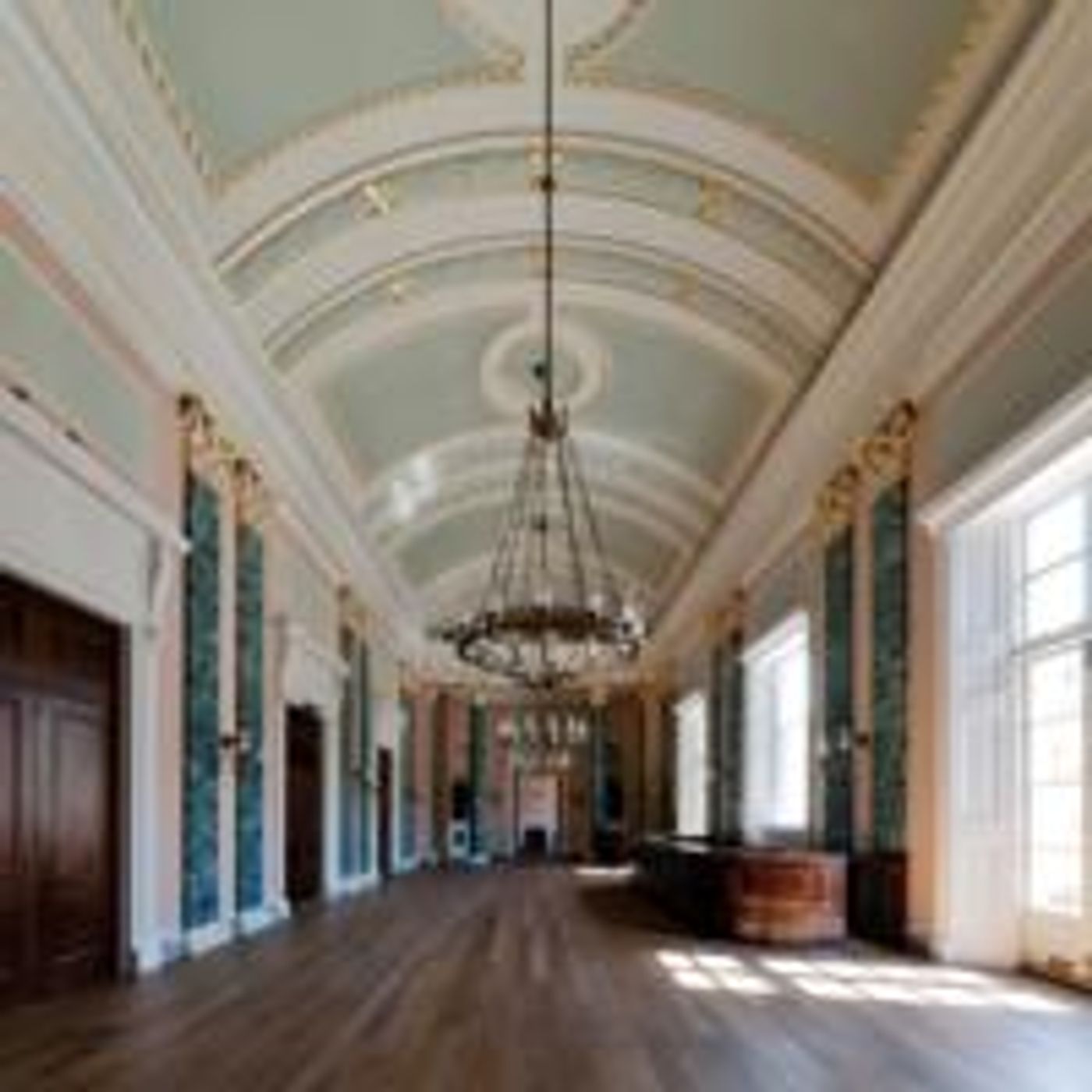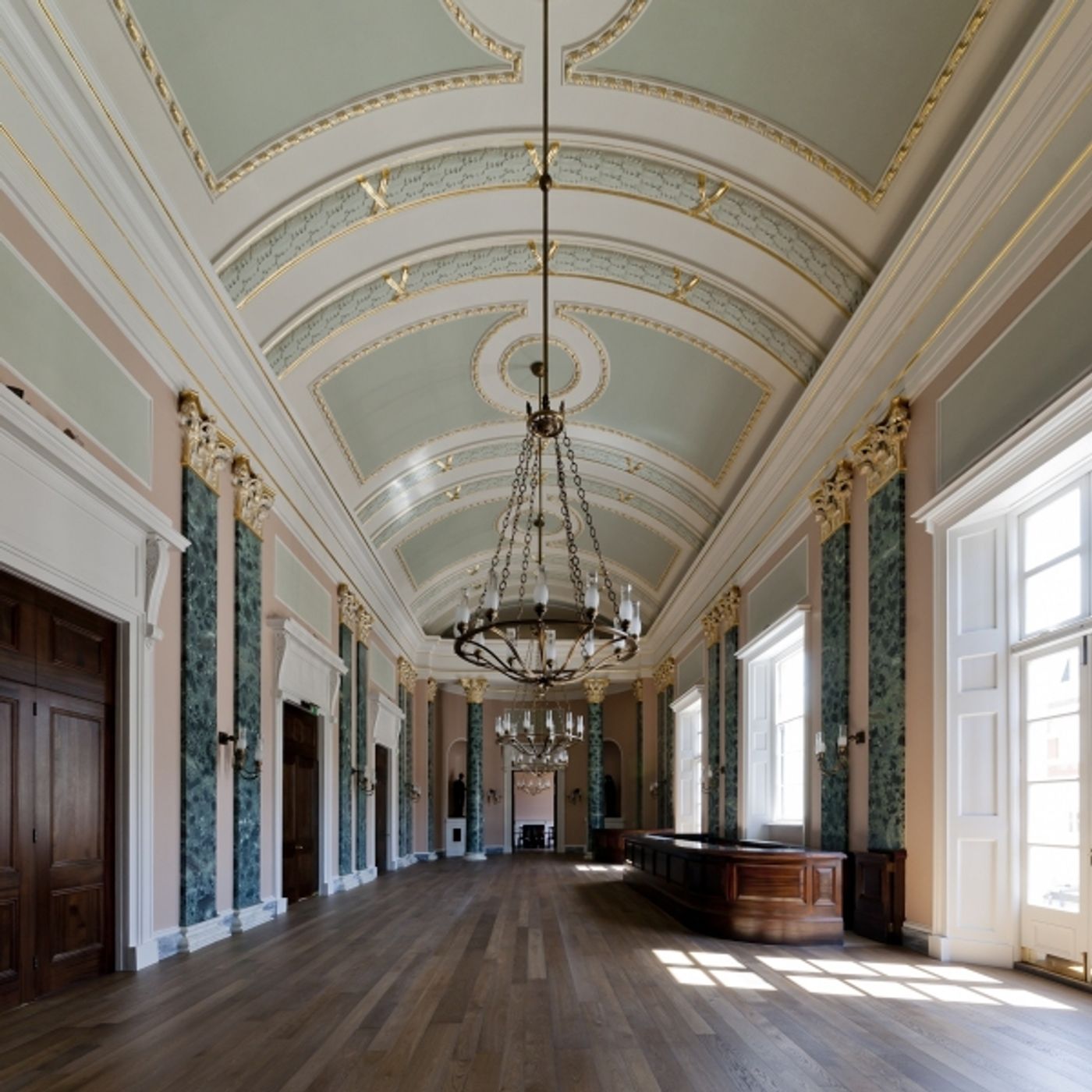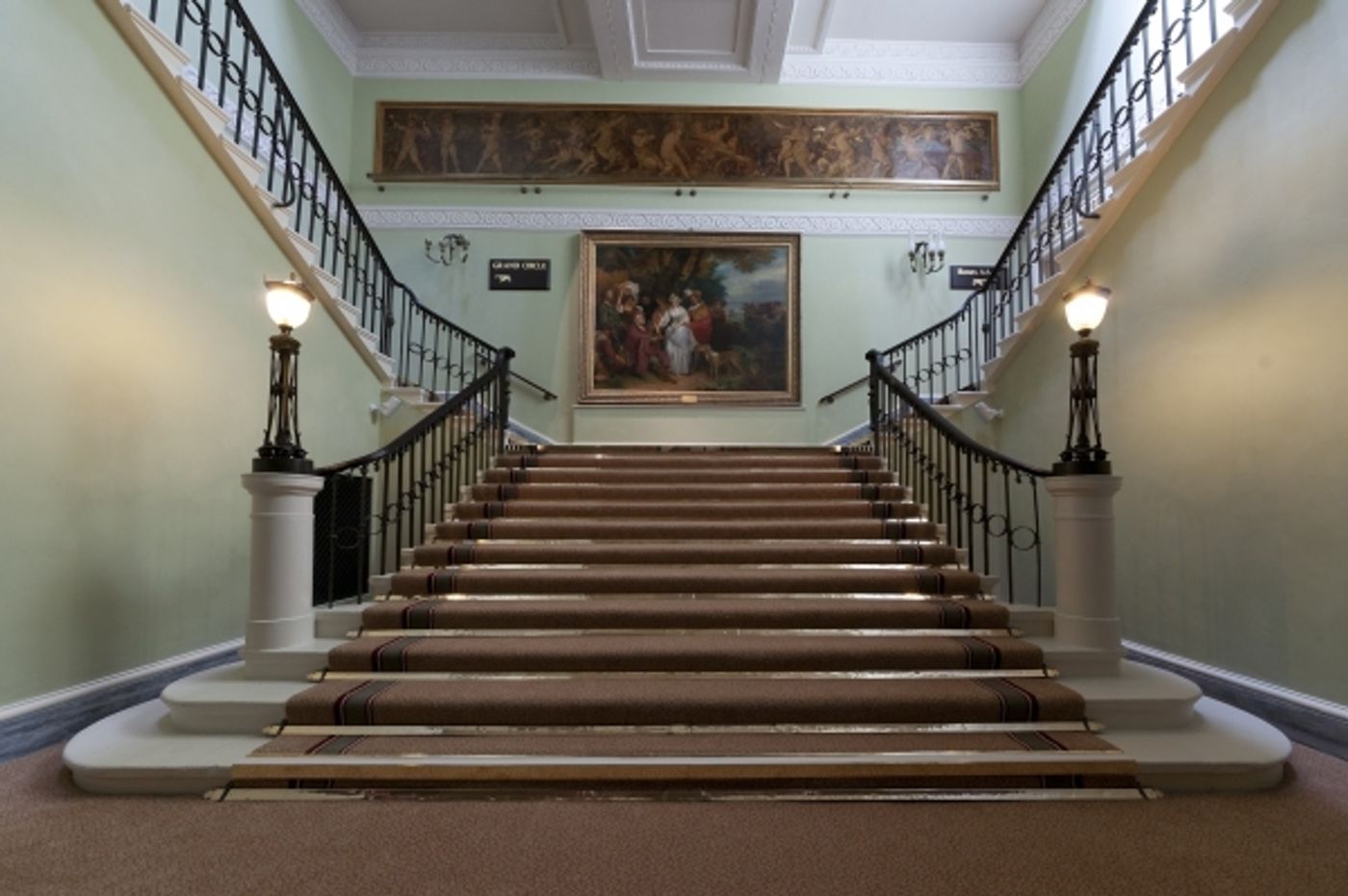Photo Coverage: Lloyd Webber Unveils Drury Lane Restoration

Visitors to the Theatre Royal, Drury Lane will also be able to view the beauty of the world-famous statue The Three Graces, a copy of which was bought at Christie's by Lord Lloyd Webber for £600,000 in March this year, especially for the theatre. The exquisite marble sculpture representing the three phases of love will be permanently displayed in the Lower Rotunda.
Lord Lloyd Webber said: "The Theatre Royal, Drury Lane is one of the most important theatres in Britain and I am proud to be the custodian of it. It contains the only working paint frame in London and its backstage area is of international historical significance. This is a two-part restoration of the building and we have begun with the reincarnation of the magnificent surviving Regency public areas. After stripping away no less than nine layers of paint and some particularly hideous red wallpaper, forensic research revealed the original colour scheme; this has been used to transform the front of house areas to their original Regency splendour.
"I bought The Three Graces for the Theatre Royal, Drury Lane, so that audiences can have the pleasure of seeing one of the world's most alluring sculptures in such magnificent surroundings. I do not personally take any income from the theatres every penny of any profit they make goes back into maintaining and restoring the buildings. My earliest passion was for architecture and my love for it has never dimmed, I am overjoyed that this work has taken place during my custodianship of this historic theatre. I am a firm believer in the importance of preserving Britain's architectural heritage for current and future generations to enjoy."
There have been four theatre buildings on the Drury Lane site since 1653. The current building, designed by Benjamin Dean Wyatt, dates from 1812 and the royal staircases, Rotunda and Grand Saloon are unique examples of early nineteenth-century architecture.
The specialist team commissioned by Lord Lloyd Webber to undertake the restoration included architectural historIan Edward Bulmer, who said: "The Theatre Royal, Drury Lane was the pre-eminent great theatre of its time and Lord Lloyd Webber was keen to re-create a sense of the neo-classical opulence of the period. Almost every part of the restoration has been informed by solid historical evidence."
All statues and pictures which were part of the original decorative scheme have been cleaned and restored revealing details not seen for years. The central window in the Grand Saloon, bricked up for many years, now lets in the daylight and the south coffee room, which had suffered the indignity of being turned into a kitchen, is once again a public room. The Theatre Royal, Drury Lane has been visited by every reigning monarch since it opened, is the only theatre with two Royal Boxes and was where the public first heard both the National Anthem and "Rule Britannia".
Audiences arriving with golden tickets to see director Sam Mendes' production of Roald Dahl's Charlie and the Chocolate Factory (previewing from Wednesday 22nd May) will be the first to enjoy the newly-restored theatre.
SOME KEY FACTS and FURTHER HISTORICAL INFORMATION
Lord Lloyd Webber sees the restoration of the Theatre Royal, Drury Lane as part of a wider commitment to help preserve Britain's architectural heritage. He is passionate about architecture and founded The English Heritage Angel Awards to reward the efforts of local people in saving their heritage.
- The first of the four buildings on the Drury Lane site was opened, courtesy of a Royal Charter from King Charles II, by Thomas Killigrew on 7 May 1663, an event important enough to be recorded in Samuel Pepys' diary.
- The original Theatre Royal Drury Lane building was about the current size of the present stage and since then it has been rebuilt three times having been destroyed by fire twice and demolished by Richard Brinsley Sheridan in 1791 to make way for a much bigger building.
- The current building, opened in 1812, survived a backstage fire in 1908 and sustained considerable damage to the auditorium from a German bomb during the Second World War.
- Drury Lane's performance history traces the history of British theatre and society from the earliest revivals of Shakespeare, through Victorian melodrama and pantomime to the modern spectacular musical.
- Victorian melodramas included spectacular stage effects including sinking sinks, avalanches, train crashes, airships and horse races. Victorian stage machinery dating from 1894 is still maintained under the stage and forms part of the building's Grade 1 listing.
- Famous names who have graced the Theatre Royal's stage include Nell Gwynne, who went on to become King Charles II's favourite mistress; David Garrick who managed the theatre for 29 years; Richard Brinsley Sheridan whose play She Stoops to Conquer was premiered under his management; Joseph Grimaldi, the great clown; Edmund Kean; Sarah Siddons; Dan Leno; Marie Lloyd; Anna Pavlova; Noël Coward; Ivor Novello; Mary Martin; Margot Fonteyn and Rudolph Nureyev; Julie Andrews; Anna Neagle and Michael Crawford
- Rose Marie was the first American stage musical to be imported to London in 1925 to be followed by The Desert Song(1927), and Jerome Kern's Show Boat (1928), which starred Paul Robeson.
- Rodgers and Hammerstein were resident at Drury Lane for nine years with the original London productions of Oklahoma!, Carousel, South Pacific and The King and I.
- The two longest running shows were the original production of My Fair Lady (five and a half years from 1958) and Miss Saigon (ten years from 1989).The theatre has been home to many musicals including Cavalcade, Glamorous Night ,The Dancing Years, Billy, My Fair Lady, A Chorus line, 42nd Street, Miss Saigon, Hello, Dolly!, Camelot, Anything Goes, The Producers, Lord of the Rings, Oliver! and Shrek the Musical.


The Grand Saloon

The lower King's Staircase

The Rotunda

Videos

